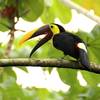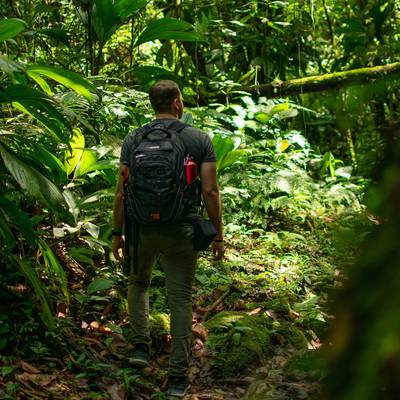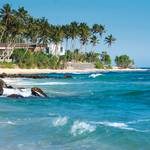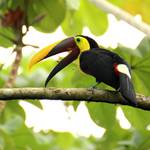General
Transport
People
Accomodation
Food & Drink
Sightseeing
 What to see it Costa Rica?
What to see it Costa Rica?
 What to do in Costa Rica?
What to do in Costa Rica?
 Are there any festivals in Costa Rica?
Are there any festivals in Costa Rica?
 What are the best tours to take in Costa Rica?
What are the best tours to take in Costa Rica?
 What are the best beaches in Costa Rica?
What are the best beaches in Costa Rica?
 Can I go on a safari in Costa Rica?
Can I go on a safari in Costa Rica?
 What should I know about surfing in Costa Rica?
What should I know about surfing in Costa Rica?
Legal
Money
Safety & Health
Family travel

What is ecotourism?
Ecotourism immerses travelers in natural areas – a rainforest or a coastal wetland, for example – with the goal of educating and imparting environmental awareness. It employs our sense of sight, smell, hearing, touch, and sometimes even taste to bring about a better understanding of the natural world. According to The International Ecotourism Society, ecotourism is defined as “responsible travel to natural areas that conserves the environment and improves the well-being of the local people.” Ecotourism unites conservation with local communities and incorporates important aspects of sustainable travel. It should minimize impact and provide a financial incentive for conservation.
Ecotourism in Costa Rica is a robust industry because the country was one of the earliest adopters of connecting nature/wildlife conservation with responsible travel.
Costa Rica has been ranked among the world’s best ecotourism destinations on more than one occasion, and became the first country in the Americas to ban hunting in 2012. As a result, its biodiversity is virtually unparalleled.
Ecotourism draws many tourists to visit the extensive national parks and protected areas around the country. Costa Rica was a pioneer in this type of tourism, and the country is recognized as one of the few with true ecotourism. Costa Rica has gained immense popularity for its development of a successful, yet environmentally friendly, ecotourism industry.
With its rich biodiversity and immense ecosystem, Costa Rica takes advantage of the growing demand for eco-tourists to visit these protected areas in exchange for profit. For years, growth in tourism in Central America was extremely slow due to civil wars in various regions; however, as peace developed in neighboring countries, tourism in Costa Rica has skyrocketed over the past two decades.
So, how do you get a genuine ecotourism experience in Costa Rica? And what is it like?
First of all, get outside. Wildlife is nearly everywhere in Costa Rica but some of the best places to go are rural and remote. Travelers are advised to explore rural communities like San Gerardo de Dota, Orosí, and Sarapiquí. Monteverde is another good one, even though the area has become increasingly popular during peak season. By visiting rural areas, travelers decrease the foot traffic in Costa Rica’s better known parks, thereby spreading out and minimizing the impact.
A huge number of Costa Rica’s national parks and reserves are not billed as “must do” activities. Nonetheless, these places offer unfiltered access to the Costa Rican outdoors. Some include the Cahuita National Park along the southern Caribbean coast, the Cabo Blanco Absolute Reserve on the Nicoya Peninsula, and the Braulio Carrillo National Park in the central highlands. If your goal is to experience nature without being elbow-to-elbow with other visitors, Costa Rica has you covered – just be willing to get your boots dirty and go off the beaten path.
As mentioned above, ecotourism activities (eco-activities) involve visits to protected areas (like national parks and private reserves), wildlife rescue centers, and family-run coffee plantations and organic farms. The fees that visitors pay to access these areas often goes towards maintaining, purchasing and conserving land, protecting endangered or threatened species, and educating local students on environmental issues.
Eco-activities, however, don’t just involve plodding along a trail or staring at obscure plants. You’ll raft down rivers and identify coastal birds. You’ll go whale watching in the Pacific Ocean and ride horses across the plains of the Central Valley. The options are as varied as the terrain.
The Costa Rican landscape is diverse – think rainforests, volcanoes, beaches, wetlands, and caves. Ecotourism exposes travelers to all this. It gets you outside and gives you perspective on the assorted complexion of life.
By their very nature these activities are educational. On a guided hike through the rainforest, for example, you might learn about the structure of the forest canopy or the medical uses for tropical plants. A guide may help you distinguish between the calls of a bellbird and toucan or point out the intricate root system of a balsa tree. During oceanic activities, you might learn about the migration patterns of humpback whales or the effect that climate change has on coral reefs. It’s literally impossible to not learn something during these activities.

Where to buy alcohol in Costa Rica and how much does it cost?

Is there tea and coffee culture in Costa Rica?

What alcoholic drinks to try while in Costa Rica?

Am I expected to tip in Costa Rica?

What is the climate like in Costa Rica?
